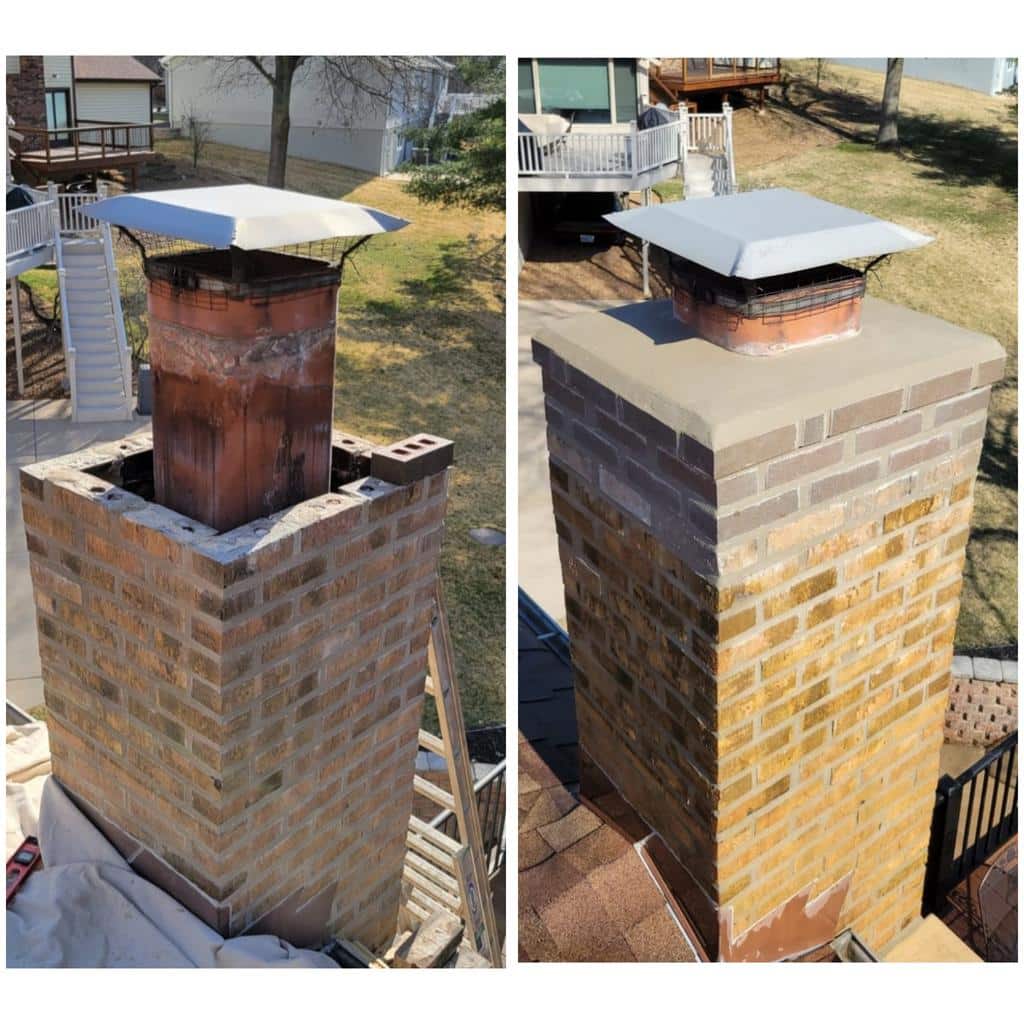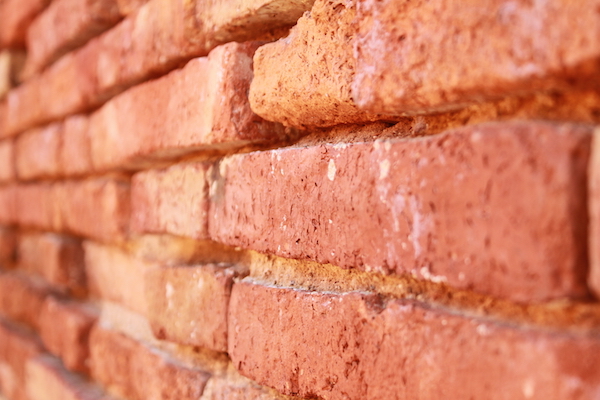Raul's Tuckpointing St. Louis MO: Establishing the Criterion for Specialist Stonework Fixing
Wiki Article
Boost the Elegance and Resilience of Your Brickwork With Tuckpointing
Over time, the mortar that holds those blocks with each other can degrade, leaving your framework susceptible to damage and detracting from its visual allure. Concern not, for there is an option that can bring back both the charm and resilience of your brickwork: tuckpointing. In this discussion, we will certainly discover the fundamentals of tuckpointing, its benefits, the distinction in between tuckpointing and repointing, the procedure itself, and the vital techniques for maintaining and caring for tuckpointed brickwork.The Basics of Tuckpointing
Tuckpointing is a skilled method utilized to boost the look and fix and structural honesty of brickwork. It includes the procedure of removing tatty mortar joints and replacing them with fresh mortar. The term "tuckpointing" describes the method of making use of 2 various colors of mortar to produce the illusion of fine joints, providing the brickwork a much more polished and cosmetically pleasing look.
The very first step in tuckpointing is to carefully assess the condition of the brickwork. This includes inspecting the mortar joints for indications of wear and tear, such as splitting, falling apart, or missing out on mortar. Once the issue areas have been recognized, the old mortar is thoroughly eliminated using specialized tools, such as a mill or carve, while guaranteeing that the blocks themselves continue to be intact.
After the old mortar has been gotten rid of, the following step is to prepare the joints for fresh mortar. This generally includes cleaning any kind of debris or loosened product and moistening the joints to make sure correct bond. Then, an experienced tuckpointer uses a directing trowel to meticulously fill up the joints with fresh mortar, seeing to it to create a consistent and flush surface area.
Advantages of Tuckpointing
Improving both the durability and look of brickwork, tuckpointing offers numerous noteworthy benefits for property owners and homeowner alike. Among the main benefits of tuckpointing is its capability to prolong the life expectancy of brick frameworks. By changing deteriorated mortar joints, tuckpointing protects against wetness from seeping right into the brickwork, which can cause architectural damages over time. This helps to keep the honesty of the brickwork and prolong its general sturdiness.Over time, mortar joints can become split, faded, or stained, taking away from the general appearance of the brickwork. Tuckpointing involves very carefully eliminating the harmed mortar and replacing it with fresh mortar of a different shade.
In enhancement to enhancing the long life and look of brickwork, tuckpointing can likewise raise the value of a property. Well-maintained brickwork is seen as a preferable attribute by potential customers and can significantly boost the curb allure of a home. When the time comes to place the home on the market., this can lead to a greater selling rate and a quicker sale.
Tuckpointing Vs. Repointing: What's the Difference?

To distinguish between tuckpointing and repointing, it is necessary to understand the key differences between these 2 approaches of brickwork remediation. While both strategies aim to maintain the architectural stability and visual charm of brickwork, they differ in their approach and implementation.
Tuckpointing is a precise procedure that involves applying two different colors of mortar to create the impression of great joints. This strategy is mainly utilized to enhance the visual charm of brickwork by developing the appearance of well-maintained and well-crafted joints. The tinted mortar is carefully applied and formed to match the color and profile of the initial mortar, providing the impression of accuracy and workmanship.
On the other hand, repointing is an extra straightforward process that includes removing broken or tatty mortar from the joints and changing it with fresh mortar. The key goal of repointing is to recover the structural honesty of the brickwork by ensuring appropriate bonding and securing between the bricks. Unlike tuckpointing, repointing does not entail the use of colored mortar or the creation of an ornamental result.
The Refine of Tuckpointing
The application of two various shades of mortar to create the impression of fine joints is a meticulous process called tuckpointing. This method includes eliminating tatty mortar joints and replacing them with new mortar to improve the look and structural integrity of the brickwork. The procedure of tuckpointing can be separated into several actions.First, the old mortar is very carefully gotten rid of making use of specialized devices such as knives and grinders. It is essential to remove the mortar to an enough deepness to guarantee a solid bond with the brand-new mortar.
Next, the joints are extensively cleansed to remove any kind of debris or dust. This aids to develop a clean surface area for the new mortar to comply with.
When the joints are cleaned up, a thin layer of new mortar is used to the joint making use of a little aiming trowel. This preliminary layer, referred to as the "punctuating" mortar, is typically the very same shade as the existing mortar.
After the first layer has been applied, a second layer of mortar is applied in addition to it. This second layer, called the "fillet" mortar, is a various shade and is meticulously shaped to create the illusion of a great joint.

Maintaining and Caring for Tuckpointed Brickwork
Once the tuckpointing process is completed, proper maintenance and care are necessary to preserve the improved elegance and durability of the brickwork. This maintenance not just makes sure that the tuckpointed locations continue to look at this now be useful and intact yet likewise helps to stop any type of potential damages to the overall framework.One of the essential elements of maintaining tuckpointed brickwork is routine cleansing. It is important to prevent making use of any type of rough chemicals or rough devices that can possibly damage the mortar or the blocks themselves.
Along with cleaning, it is crucial to evaluate the tuckpointed areas regularly. This permits for the very early detection of any type of indicators of deterioration or damage. Any type of splits, loosened mortar, or signs go to this website of water damage should be attended to promptly to stop further deterioration.
Additionally, ensuring appropriate drainage around the brickwork is important. Water pooling or improper drainage can bring about moisture infiltration, which can weaken the mortar and cause structural damage. Clearing gutters and downspouts frequently and making sure that they are effectively routed far from the brickwork can aid stop these problems.
Finally, it is suggested to talk to an expert tuckpointing specialist for routine repair and maintenance. Their competence and experience can guarantee that any type of required repairs are done correctly, keeping the honesty and durability of the tuckpointed brickwork.
Conclusion
To conclude, tuckpointing is a beneficial method for enhancing the elegance and toughness of brickwork. It provides numerous official statement advantages, such as improving the architectural stability of the stonework and stopping moisture infiltration. Tuckpointing involves the elimination and replacement of tatty mortar, leading to a consistent and clean look. By appropriately caring and keeping for tuckpointed brickwork, house owners can guarantee its durability and remain to appreciate its visual charm.
It includes the procedure of getting rid of scrubby mortar joints and changing them with fresh mortar. Raul's Tuckpointing St. Louis MO.After the old mortar has been removed, the following action is to prepare the joints for fresh mortar. Tuckpointing involves thoroughly getting rid of the harmed mortar and replacing it with fresh mortar of a contrasting shade. The tinted mortar is very carefully used and shaped to match the color and profile of the original mortar, providing the perception of accuracy and craftsmanship

Report this wiki page